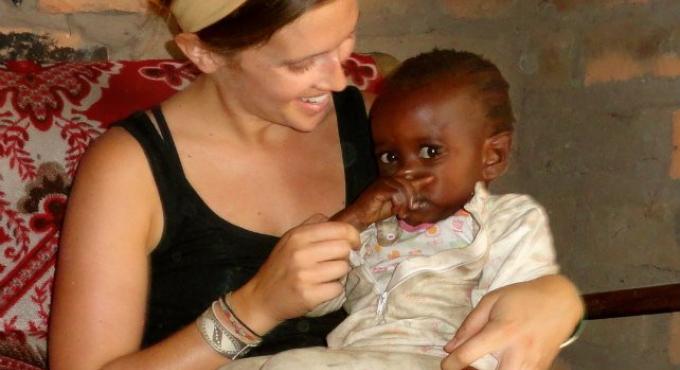Growing trees make a forest. —Zambian proverb
My first experience in international development was as a Peace Corps Volunteer in a rural village in northern Zambia. During my 2 years as a health volunteer, I saw time and time again projects designed by “experts” in Washington, D.C., that failed in my small village. I saw TVs donated even though we rarely had electricity. I saw expired medicine given out in my health clinic and stacks of health records piled high, filling our back room and gathering dust.
This was a key reason I decided on a career in monitoring and evaluation: I wanted to work with organizations to help them become more effective and reduce these kinds of failures. The reason I joined EnCompass was its commitment to approaches that meant listening first and acting second.
On my first day at EnCompass, I joined a team working with Save the Children’s Saving Newborn Lives program. Since 2000, Saving Newborn Lives has taken high-impact newborn services and practices to scale in 18 countries, working to reduce the 2.6 million newborn deaths that occur globally. The most recent grant had the formidable goal of moving from researching and testing newborn interventions to institutionalizing them in the countries where they worked. EnCompass was the evaluation and learning partner for the grant.
Our work relied on EnCompass’ whole-systems approach to monitoring and evaluation. This means looking not at a single element—like stocking medicine in my village’s health clinic in Zambia—but at the entire health system, in all its complexity, to understand how the many parts can function together to create sustained change. It means measuring whether the right drugs are on a Country’s Essential Medicines List, ensuring supply chains are in place to get the drugs to each village, and assessing the quality of training for nurses and doctors so they can distribute the medicine to those who need it.
For Saving Newborn Lives, our team worked collaboratively with Save the Children to articulate this complexity by creating the “Pathway to Effective Coverage.” The Pathway helps us map where countries are on the iterative journey toward institutionalizing and scaling up interventions that can save newborn lives.
We designed the Pathway with indicators to help country governments easily see where they fall within the six components and where additional attention was needed.
Yes, I know: frameworks aren’t the most exciting topic for your dinner table conversation. But the Pathway isn’t just another framework. Its utility comes from what I think of as EnCompass’ “magic touch.” The Pathway doesn’t sit on a shelf, collecting dust, because we designed it alongside a process for using it, grounded in Appreciative Inquiry, which helps users visualize success together—a powerful motivator for change.
When we talk about users of the Pathway, we mean people and groups from across the spectrum of newborn health. We made sure country stakeholders—from government to NGOs—could put the Pathway to use right away. We helped Saving Newborn Lives’ country teams use it for strategic planning, prioritizing where to focus resources and how to create complementary efforts with other partners. The teams then used the Pathway as a monitoring tool, continually coming back to see how their countries were progressing and where they were facing challenges.
Meanwhile, we used the Pathway as a global tool for evaluating and measuring progress in countries where Saving Newborn Lives was no longer present, and for the final evaluation of the entire program. To ensure findings from these assessments are used, we always follow our initial research with a participatory findings workshop. This process has the benefit of validating our data while giving stakeholders and end users a valuable tool for prioritizing resource allocations.
For me, the Pathway exemplifies how EnCompass avoids what I saw in my village in Zambia. We see ourselves as facilitators and learning partners, not external evaluators or implementers, and we forge strong relationships that allow objectivity while enabling continuous learning. Our utilization-focused approach means country stakeholders are at the center of the work, directing their countries’ development.
By bringing in the whole system, the Pathway for Effective Coverage at Scale is a powerful tool for understanding where countries are making progress, and where to fill gaps. Saving Newborn Lives used it for newborn care, but the Pathway is applicable in any public health intervention. It’s proof that with a framework rooted in evidence and designed for real-world application, we can continue improving health outcomes around the world.
—
The Pathway has been presented at conferences around the world, including the African Evaluation Association Conference in Uganda, the American Evaluation Association Conference in Washington, D.C., and the Global Health Mini-University in Washington, D.C. It will also be presented at the upcoming Health Systems Research Conference in October 2018. Several donors from the United Nations, the U.S. Government, and country ministries of health in Asia and Africa have shown interest in using the Pathway to assess their country programs and interventions.
Photo c/o Kelsey Simmons. All Rights Reserved.
This blog was first posted on the EnCompass website.
